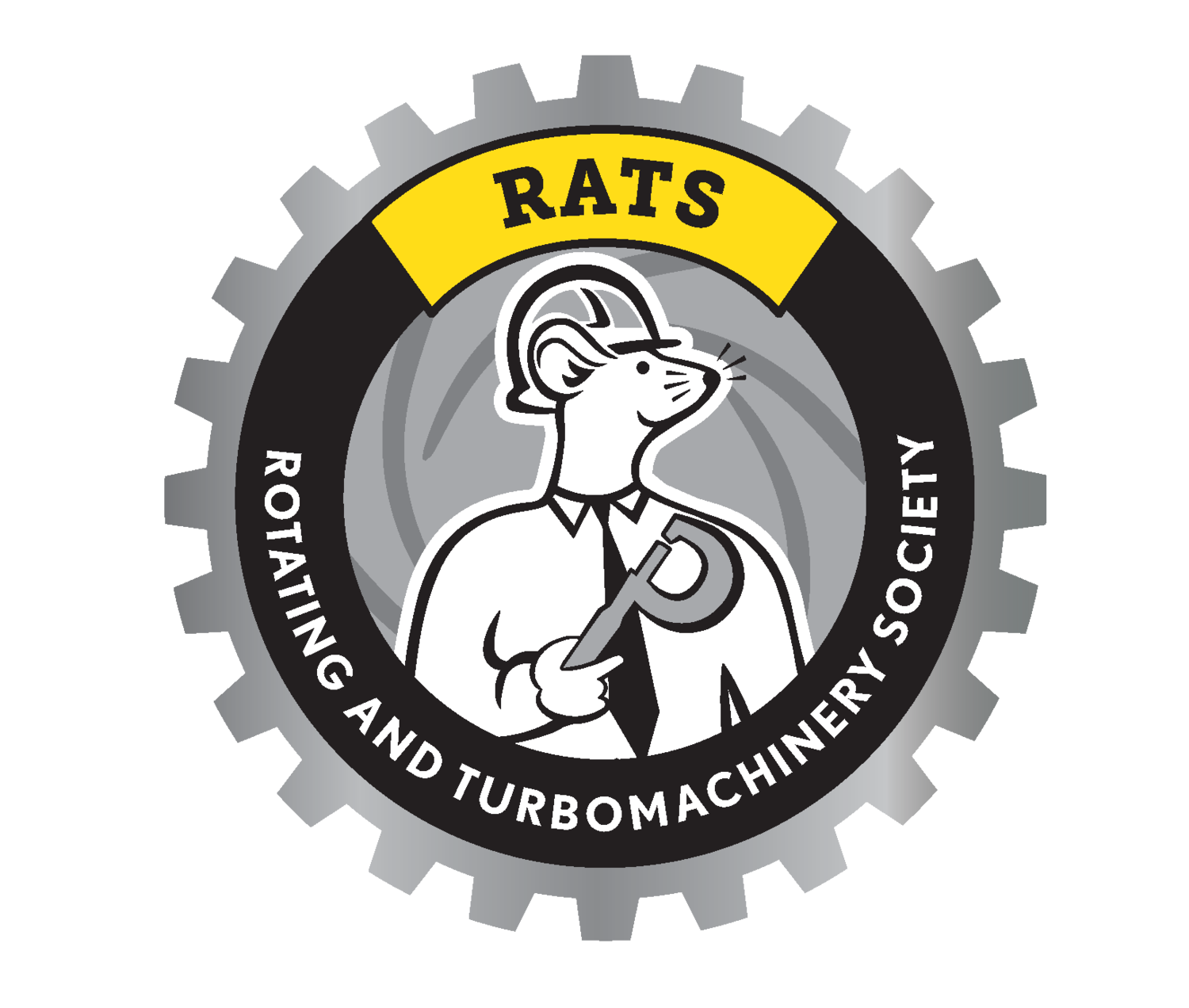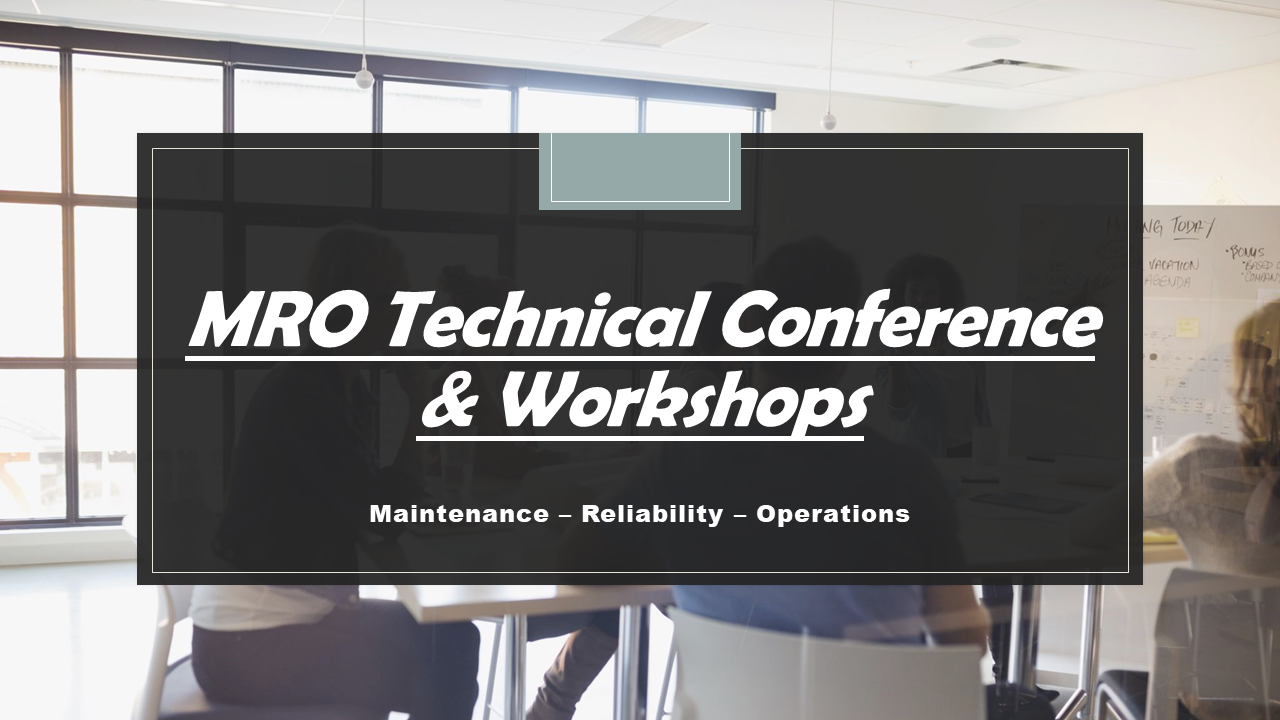
RATS MRO Conference
Presentation ARchive
2023 Presentations
2022 Presentations
2018 Presentations
Rotating without Maintenance - Maintenance-Free Couplings
Topic:
Rotating Without Maintenance - Maintenance-Free Couplings
Instructor(s):
-
Patrick has a large knowledge of the industry as he’s been in the business for more than 40 years servicing and helping find solutions to many rotating equipment applications.
Patrick has been with Renold for more than 10 years.
-
Helene has 40 years’ experience in the industrial business and has been with Renold for the last 31 Years. Helene specializes in these coupling products, has performed a multitude of training classes across the country, and is the go-to person when it comes to coupling applications.
Details:
One (1) hour presentation, including up to 15 min. Q&A
Description:
Our representatives will be presenting our Hi-Tec coupling series as well as our PM Series. The RBI coupling is a perfect fit for all industrial applications, the main features of the Hi-Tec series are: a maintenance-free coupling, vibration control, zero backlash and many other features that helps having a rubber-in-compression coupling. The PM Series, another excellent option for all industrial applications can be suitable for shaft diameters up to 32 inches.
Renold will demonstrate the reliability of these couplings, the excellent opportunity for cost savings, and how they are suitable for a large variety of industries, such as; metal manufacturing, mining, fans, compressors, cranes and hoists and many more.
The When, Why and How of The High Velocity Oil Flush
Topic:
The When, Why and How of The High Velocity Oil Flush
Instructor(s):
-
-
18 years in the Industrial Oil Analysis business, and now determining the root causes of equipment problems to addressing them.
Details:
One (1) hour presentation, including up to 15 min. Q&A
Description:
Consistency is the key to success. This is true with sports, skills, and the maintenance of industrial rotating equipment. Part of good maintenance is using the High Velocity Oil Flush to clean equipment internals and ensure you get the most out of your equipment through a long and healthy life cycle. Turbulent flow, heat and vibration are just some of that major factors that contribute to an effective oil flush. Follow the journey of a piece of equipment, from commissioning, to maintenance, to end of life discussing the function of the lubricant, the root causes of problems, how oil analysis is used to monitor condition and how an oil flush can help you get the most out of your equipment.
Oil-Free H2 Compression Challenges & Solutions
Topic:
Oil-Free H2 Compression - How to Solve the Challenge of Delivering Large Mass Flow & High-Pressure & Long MTBO
Instructor(s):
-
-
Johann has worked for Burckhardt for over 12 years in various strategic business development, sales, and management roles, based in Edmonton. He graduated from the University of Alberta with a Bachelor’s Degree in Mechanical Engineering.
Details:
One (1) hour presentation, including up to 15 min. Q&A
Description:
Mr. Oliver Franz with Burckhardt’s hydrogen compressor group works closely with Mr. Johann Scherer-Brown in this booming market. Together they will present advancements in the emerging hydrogen market, which is particularly active in Alberta.
See and Hear 3-Types of Pump Cavitation
Topic:
See and Hear 3-Types of Pump Cavitation
Instructor(s):
-
Stefan Fediw has been in the fluid transfer industry for almost 25 years. In that time he has worked for several pump manufacturers along with equipment distributors. For many years, Stefan also taught several Millwright (night-school) College courses. In his current position, with John Brooks Company, he works closely with Consulting Engineers on pumping projects and is also heavily involved in maintenance training for Municipal and Industrial Equipment Operators.
Details:
One (1) hour presentation, including up to 15 min. Q&A
Description:
This presentation is an overview of the 3-types of cavitation within a centrifugal pump. Along with PowerPoint slides, there will be an actual "glass-face" pump to demonstrate all the forms of cavitation within the pump. Discussions will also focus on mitigation and elimination of cavitation.
High Performance Pistons – Optimizing Run-time and Predicting Performance
Topic:
High Performance Pistons – Optimizing Run-time and Predicting Performance
Instructor(s):
-
John Ladd is the Engineering Manager at HOERBIGER Service Inc. based in Houston, TX. He supports the North America service branches providing repairs and upgrades on Reciprocating Compressors for the Oil & Gas and Chemical/Petrochemical industry. Prior to his current role he was a Solutions REE Engineering Specialist and Compressor Analyst at HOERBIGER Service Inc. John earned his Master's in mechanical engineering at Colorado State University with a focus on legacy integral pipeline compressors.
Details:
One (1) hour presentation, including up to 15 min. Q&A
Description:
Reliability and performance related issues of pistons and cylinder rings can be avoided in the vast majority of cases and the piston should not be the MTBF (Mean Time Before Failure) bottle neck. Even for some non-lube machines a piston layout can be designed that results in a five year uninterrupted run-time (as discussed in one of the cases in this paper). Piston performance and reliability is highly predictable. In most cases poor reliability of cylinder rings stems from incorrect application of particular ring designs, insufficient engineering or off-the-shelf methods.
A new design process has been developed to mitigate reliability bottle-necks on reciprocating compressor pistons. The first pistons that have been engineered using this process were installed 2015. This paper presents a general guideline for the design of high performance pistons and a case study that validates the methods applied. The main topics are:
The piston layout optimization process
The details of the changes from an existing to a new design.
Inspection of worn cylinder rings and quantifying the wear rate.
Comparison the measured wear rate to the prediction of the model that was used during the design and engineering phase
Building a Business Case for Maintenance & Reliability Improvement
Topic:
Building a Business Case for Maintenance & Reliability Improvement
Instructor(s):
-
is the author of "Root Cause Analysis Made Simple – Driving Bottom Line Improvements by Preventing One Failure at a Time". She specializes in asset management and reliability strategy, cost effective lean maintenance programs, and operational excellence. With a keen interest in building competency and capability in client staff, Susan brings over 25 years of progressive experience to drive asset management, reliability, and maintenance business decisions, and to implement improvement opportunities in asset intensive 24 x 7 x 365 production companies primarily in the commodity sectors.
Details:
One (1) hour presentation, including up to 15 min. Q&A
Description:
With today’s continued emphasis on delivering value from our assets while balancing cost, risk and performance, the need to understand the business contributions from maintenance activities has never been higher. This session will focus on ‘Building the Business Case for Maintenance and Reliability Improvement’. The intended audience of this presentation will be involved in day to day maintenance and reliability functions at their facility, such as millwright leads, rotating equipment specialists, and Engineers.
Topics include:
Moving from a reactive to proactive maintenance culture – breaking down the silos, introducing PdM methodologies
Contributions of proposed maintenance improvement activities to meeting organizational goals and objectives
Quantifying the contributions of maintenance improvement (i.e. increased availability, increased throughput, decreased OPEX per unit of production)
How to get started on your improvement journey
Root Cause Failure Analysis
Topic:
Root Cause Failure Analysis
Instructor(s):
-
Chris provides bearing related equipment design and maintenance expertise to many of Canada’s resource based industries. He started with NTN in 2002 with a background in material handling equipment design. Focusing on Petroleum, Mining and the Pulp and Paper industry, Chris is very familiar with applications in extreme operating conditions.
-
James completed a Bachelor of Science degree in 1999 from the University of Alberta and subsequently spent 18+ years in territory management and technical sales.
Details:
One (1) hour presentation, including up to 15 min. Q&A
Description:
Regardless of industry, one reality is that demands on rotating equipment result in demands directly on the bearings. Join the NTN Technical Engineering And Maintenance TEAM for a discussion on root cause failure analysis.
A major component of any effective preventative maintenance program is understanding what went wrong...and then correcting the problem. Bearing failure analysis is a pro-active, front line job that has proven to increase equipment up-time. In this lecture, we will review the most common rolling element bearing failure modes and causes.
Following the lecture, there will be a demonstration of NTN diagnostics services utilizing our INSYNC remote diagnostics service to show a failure review in real time from our diagnostic lab.
Mobile Augmented Reality Services
Topic:
Mobile Augmented Reality Services (M.A.R.S.)
Instructor(s):
-
Nick is experienced with Automated Systems Design and Engineering, PLC Programming and Installation, HMI Programming, Augmented Reality, as well as Commissioning and Maintenance.
Nick has spent 14 years at Surepoint Group in various roles such as Software Development Engineer, Field Services Engineer, and currently as Control Systems Engineer.
Nick holds a Bachelor of Science in Computer Engineering from the University of Alberta.
Details:
One (1) hour presentation, including up to 15 min. Q&A
Description:
Leveraging the power of the Microsoft HoloLens 2, companies can connect with their workers and industry experts on any job site remotely utilizing hand-free 2-way voice and video collaborations.
The Hololens 2 is the most advanced augmented reality device in the industry and allows workers on any job site to connect with their teams and colleagues in a variety of applications.
Remote Worker Assistance
Design and Place
Training and Technical Support
Visualize Your Ideas
The presentation will include a live demonstration of the technology at work plus a case study where inspectors are able to witness project progress with a guided walk through of a facility remotely without having to travel to site.
Electrification and Modernization of Reciprocating Compressors
Topic:
Electrification and Modernization of Reciprocating Compressors
Instructor(s):
-
More than 15 years of experience specializing in rotating equipment design and service, with a strong focus on reciprocating compressors. Presently leads the technical services department, specializing in machine revamps, upgrades, troubleshooting, RCA, component fatigue and field service support. Beyond the machine he is an expert in problem solving issues related to vibration, acoustical pulsation and fatigue of piping and structures.
Details:
One (1) hour presentation, including up to 15 min. Q&A
Description:
-Identify potential failure modes and forces that cause them
-API 618 Pulsation and Torsional studies (what are they and why they need to be done)
-Coupling selection and Dampening (Campbell diagrams and how they work)
-Example of component failures and solutions
-Case study
Machinery Grouting Best Practices to Optimize Equipment Performance
Topic:
Machinery Grouting Best Practices to Optimize Equipment Performance
Instructor(s):
-
Jason has worked for Chinook Industrial for a total of 27 years, bookending a 2-year hiatus. Jason is a seasoned management professional as well as a technical sales rep with experience in such things as compressor valve manufacturing & reconditioning, grouting & coating systems, and lubrication systems. He graduated from SAIT with a diploma in Aircraft Maintenance Engineering Technology.
-
Fred’s expertise in technical sales caps a 35 year career with Chinook Industrial Ltd.
Beginning as a Red & Blue Seal Machinist involved in the design and manufacture of the Chinook Compressor Valve. Fred’s electrical and mechanical background supported his movement into engineering providing CNC programing and product design support. During his tenure in engineering he became involved in quoting and problem solving on Epoxy Grout and Automated Lubrication applications that led to his sales career.
His career has involved him in the Oil & Gas, Marine, Mining, Forestry, and Construction industries with a focus on providing customers with long-term maintenance solutions to improve reliability and decrease costs.
Details:
One (1) hour presentation, including up to 15 min. Q&A
Room name and time slot TBD
Description:
Presenting best practices for achieving optimum equipment performance from a machinery grout perspective. Equipment reliability is a key component of, and directly proportional to, profitability with today’s industrial producers. Our goal is to educate end users on principles for achieving optimum machinery and equipment reliability and lower operating costs using epoxy machinery grouts and focusing on best installation practices.
Turbine Rotordynamic Instability at CAES Facility
Topic:
Resolution of Expansion Turbine Rotordynamic Instability at a Compressed Air Energy Storage (CAES) Facility
Instructor(s):
-
Wally Bratek is a Principal consultant in Wood’s vibration, dynamics and noise group. His more than 20 years design and field experience include acoustical (pulsation) and mechanical vibration analysis, machinery diagnostics, field testing and troubleshooting, alignment, high-speed balancing, lateral rotordynamics and piping flexibility.
Wally has presented multiple papers at industry conferences including the Gas Machinery Conference (GMC) and Vibration Institute Annual Training Conference (VIATC). He has served on API Standards 618 and 688 committees and is a member of the GMRC Gas Machinery Conference Planning Committee.
Details:
One (1) hour presentation, including up to 15 min. Q&A
Description:
Renewables can provide economical carbon-free electricity, but due to inconsistent weather, power from solar and wind is intermittent. Technologies that can temporarily store electricity to firm-up the supply from renewables will allow electricity grids to meet energy demand with a lower carbon footprint. In compressed-air energy storage, excess renewable electricity is used to run compressors that inject air into underground caverns. When electricity is needed, the compressed air is expanded through turbines to generate electricity. A water injection system moderates the pressure in the cavern and allows the machinery to operate at consistent operating pressures.
This case study focuses on rotordynamic instability that was experienced on one of the expansion turbine stages during commissioning of a compressed air energy storage (CAES) facility in Ontario, Canada. The turbine which experienced the vibration is a two-stage, integrally geared, radial turbine powered by heated compressed air and coupled to an 1,800 kW induction generator. The turbine rotor is equipped with tilt-pad bearings and operates at 42,000 RPM.
Broad-spectrum sub-synchronous vibration was experienced on the rotor during the initial runs, which was determined to be due to aerodynamic instability. The vibration caused the turbine to trip prior to reaching the full power operating condition. Swirl brakes, a flow straightener in the turbine exhaust, and reduced bearing oil supply temperature were implemented during commissioning with limited improvements to rotor stability. The thrust balance pressure and resulting thrust load also showed only a minor influence on rotor stability.
The rotordynamic simulation model was then investigated to duplicate the field test results and determine potential design or operating changes to increase the stability margin. The original rotor model confirmed marginally stable results at the design operating conditions. However, subsequent analysis determined that start-up operating conditions resulted in reduced stability margin.
Experimentation in the field established that with careful control of the turbine inlet variable nozzles that manage mass flow and interstage pressures, as well as manual control of impeller thrust balance pressure, successful operation to full power could be achieved without a vibration trip. Ultimately, automation and tuning of turbine inlet nozzles and thrust balance pressure allowed the turbine to be routinely started and operated to full power while avoiding or quickly passing through unstable operation.
The rotordynamics model was also used to design a squeeze-film damper bearing to significantly improve the stability margin. The new bearing was procured, along with an optimized swirl brake, and these items are available as a precaution to be installed if stability problems reappear in the future.
Mechanical Seal Plan 54 for Severe Duty Application
Topic:
Mechanical Seal Plan 54 for Severe Duty Application
Instructor(s):
Chris Ausford, Engineering Manager, John Crane
Bryce Dreger, Engineering Specialist
Details:
One (1) hour presentation, including up to 15 min. Q&A
Description:
Dual-pressurized mechanical seals can provide the highest level of safety and equipment uptime. Achieving this potential however, typically requires a more elaborate support system and thus more complex consideration from initial design to long-term operation. The API Plan 54 External Pressurized Barrier System is the most widely misunderstood of all options but with the correct design and implementation, this approach can deliver unmatched reliability in virtually any application. An exceptional partnership between John Crane and Enbridge over the past 6 years has resulted in the development of a highly successful Plan 54 solution for severe operating conditions with implications that could improve understanding and reliability of these systems across all industries. This presentation will share some of the key learnings and optimization tactics discovered through a case study of this unique design and application.
-
Chris graduated from the University of Alberta with a B.Sc. in Mechanical Engineering. Joined John Crane in 2007 as an Applications Engineer in the First Fit Projects group, eventually moving into a Technical Sales position looking after customers in mining, oil & gas, pulp & paper, OEM, and pipeline. With nearly 15 years’ experience in the rotating equipment industry, Chris now leads the engineering team for John Crane Canada with 10+ engineers spread across the country in Quebec, Ontario, and Alberta.
-
Bryce graduated from the University of Alberta with a Petroleum Engineering degree in 1985. He has spent 35 years focused on rotating equipment within a wide range of industries. Although his specialty is mechanical seals and sealing systems, he has spent the last 15 years working with a broad range of pumping equipment – currently as a Pump SME for Enbridge Pipelines. He has touched every facet of the industry from design, procurement, commissioning, operations, maintenance, and troubleshooting. He enjoys spending time with his family; a wife, 4 children and 4 grandchildren. He also tries to travel as much as possible.





